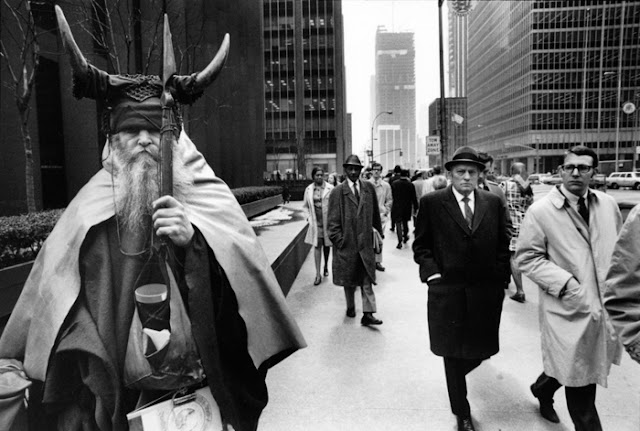Life’s like that: A couple of posts back I was writing about the Ho Chi
Minh Trail, and now, by serendipity, I discover there’s such a thing as the Snow
Chi Minh Trail.
It’s not much of a place to go walking, as far as I can see. It’s a mountainous section of Interstate 80, in Wyoming, between Walcott Junction and Laramie, 72
miles of bad road, site of some appalling winter driving conditions and
subsequent highway crashes.
It was opened in the fall of 1970, and although it
was lined with the best kind of snow fences then available, they weren’t good enough to
deal with the severity of the snow that affected the area. And so the Wyoming
Highway Department had to become experts on snow fence technology, which led to
the development of the Wyoming Snow Fence.
 |
| CLUI photo |
“These porous rows of tall wooden fence, rolling
across the hills, are not made to block the snow, but to cut the wind, causing
wind-borne snow to drop rather than to accumulate in places where it may pile
on roads or cause white-out conditions or stream across the road surface
forming a persistent layer of ice.”
I’m quoting there from The Lay of the Land
(that’s where I discovered the Snow Chi Minh Trail), it’s the newsletter of the
Center for Land Use Interpretation, one of LA’s more wonderfully eccentric yet
utterly serious enterprises, that (I think it would be fair to say) is
concerned with nature and culture, with the ways in which people live on the
earth and what they do to it. I picked
up the newsletter because I went to an exhibition at the center, titled “Middles
of Nowhere: Dry Lakes of the Mojave.”
It’s a
fabulously austere exhibition, in a not very well illuminated, windowless
space. There are small black and white
maps on the walls showing dry lakes, with brief informative notes on each lake;
no bells or whistles, nothing for the kids.
I thought it was just wonderful.
The founder of the CLUI is Matthew Coolidge, and
I’ve read interviews in which he’s talked about the meanings of “somewhere” and
“nowhere,” and how there’s really no such thing as nowhere. When you’re in the middle of nowhere you’re
always somewhere, possibly in the middle of a dry lake.
Even so, a dry lake is a special category of
somewhere, a contradiction in terms maybe, and a place defined by an
absence. A lake is a place with water, a
dry lake is a place without. Of course
some dry lakes do have water at certain times of the year, but then they shrink
and disappear. Their boundaries aren’t
fixed and eventually they have no boundaries at all. Go pick the symbolism out of that one.
And I realized I’ve done a fair amount of walking
on or around Californian dry lakes, not as part of any great project, just
because I like to wander through the desert in a more or less haphazard way. Here are a few of them.
This is Searles Lake, seen from the town of Trona:
This is Owens Lake, about ten miles south of Lone
Pine, generally regarded as the largest single source of dust pollution in the
United States. You definitely don’t want
to be there on a windy day:
And this is Racetrack Playa in Death Valley: I’m
not really sure that I understand the difference between a dry lake and a
playa, or even if there is one:
As you can see (I hope), plenty of other people enjoy walking
on the Racetrack – which is certainly one of the problems of visiting Death
Valley. It has been reduced to a number
of sights and attractions, to a series of “somewheres” where people
congregate. If you’re looking for peace
and isolation in Death Valley you have to find a spot between named
places. Oh yeah, and do bear in mind
that Death Valley is not a valley, it’s a graben, or perhaps a half-graben. (How long have you got?)
These thoughts of dry lakes reminded me that the first dry lake I ever encountered
was Lake Ballard, in Australia. I only
went there because of the name – because I was a fan of JG Ballard, but it was
truly startling, the emptiest, loneliest place I’d ever been. I’ve just had a dig in the archive and I’m
pretty sure this photograph was taken at Lake Ballard, though it was a long
time ago, and my archive is a mess, so I could be wrong.
Anyway, I hear that the bed of Lake Ballard is now decked out with 51 sculptures by Antony Gormley which seem attractive enough, but I
suppose they also makes it more of a somewhere, possibly even a tourist destination.






































